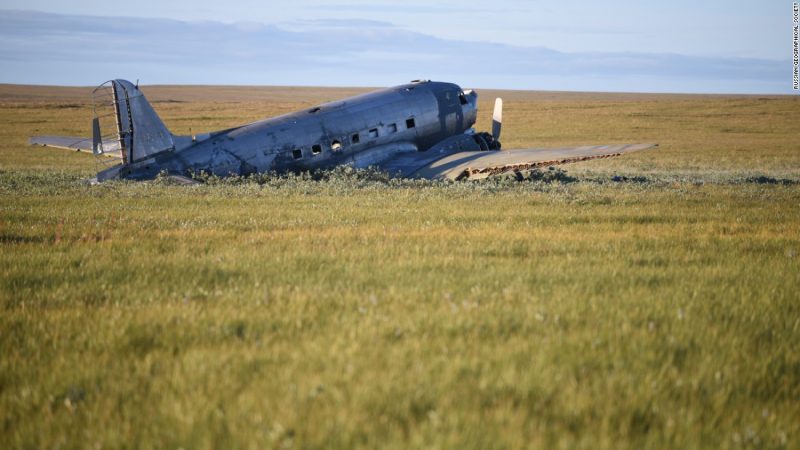The Russian Geographical Society is now the proud owner of a 70-year-old Douglas C-47 aircraft, a workhorse of the Second World War.
The plane was salvaged from one of the most remote places on earth: the marshy tundra of theTaymyr Peninsula of northern Siberia located several hundred miles away from the closest human community.
How it got there is a story in itself. Back in 1943, the war years, the Lend-Lease guaranteed that a constant stream of U.S. war material was earmarked for the Soviet Union. The C-47 was delivering supplies using ALSIB, short for the Alaska-Siberia air road. The supply route extended thousands of miles from the United States, traversing northern Canada to Alaska, and then across the Bering Strait to the city of Krasnoyarsk in Siberia.
Most of the airplanes flew onto the front, but such was not the case for this aircraft. It pulled rearguard duty, ferrying supplies and reconnaissance flights. In 1946 it was transferred to civilian jobs, flying to isolated outposts in northern Siberia from Krasnoyarsk.
On April 23, 1947, the C-47 was flying between Krasnoyarsk and Kozhevnikova Bay on the Arctic coast, via the town of Dudinka, with two dozen passengers, three of them youngsters.
Enroute, the left engine malfunctioned and shut down. The flight continued with the one remaining engine, but it overheated and stopped after four hours. The pilot had no choice but to make a crash landing in the middle of, literally, nowhere.
Nobody sustained injuries, but it was clear the chance of being rescued was exceedingly small.
After three days in the downed aircraft, the captain, flight engineer, radio operator, and six passengers resolved to find help by making a bold trek. They did not survive.
Come May 11, after almost three weeks in the tundra, a transport aircraft spotted the downed aircraft and landed to see if anyone needed to be rescued. After that, the plane was forgotten about.
In early August, a 15-person team from the Russian Geographical Society, that had for some years thought of salvaging the aircraft, arrived. After five days, the team cut the plane into pieces – wings, engines, fuselage, central section, and engines, so a Mi-8 helicopter could lift the pieces, depositing them on a barge that had been driven to the Pyasina River located nearby, CNN.com reported.
Yulia Komissarenko, a representative of the Siberian branch of the Russian Geographical Society, explained that the aircraft will hold the place of honor at the future Museum of the Exploration of the Russian North. Meanwhile, specialists will assess the requirement for additional restoration. When the restoration is complete, the C-47 will be a static exhibition or used as a part of traveling displays.
https://www.youtube.com/watch?v=LfDCEUfzpBY
